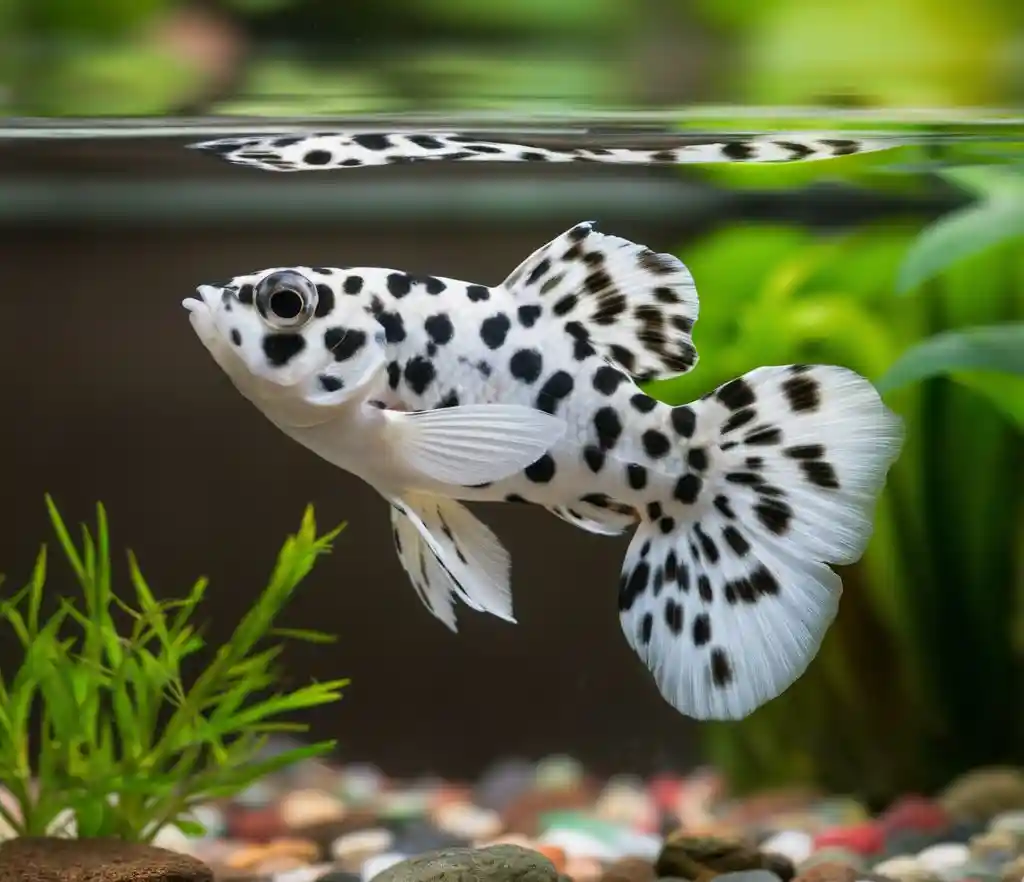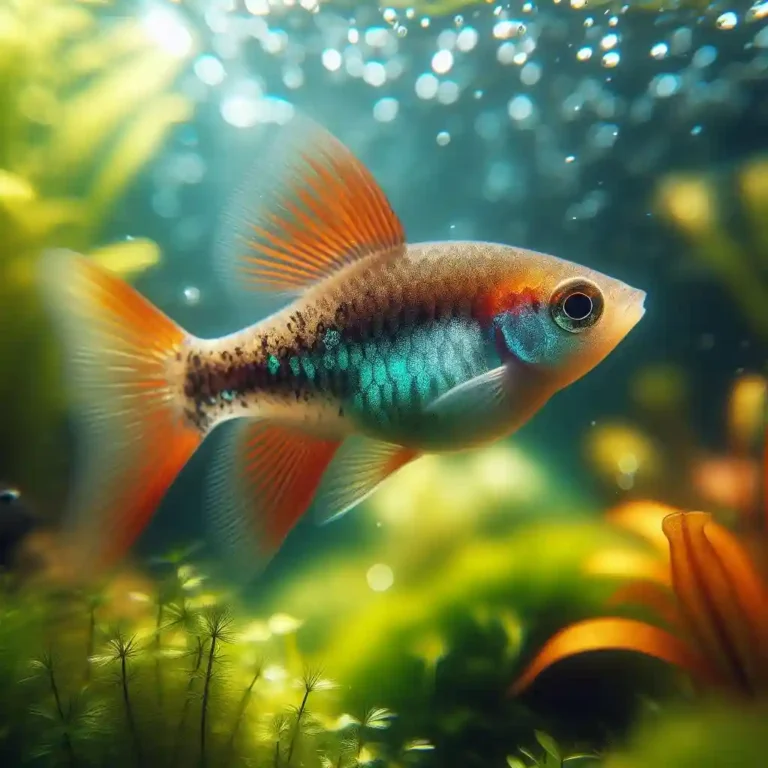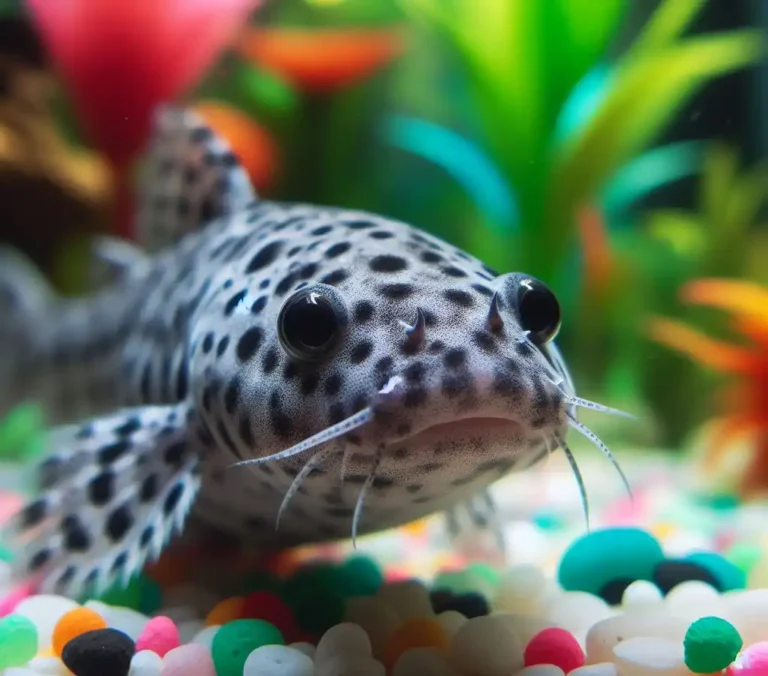Pregnant Dalmatian Molly Fish: A Beginner’s Guide to Breeding and Care
Pregnant Dalmatian Molly Fish: As an aquarist, you’re likely no stranger to the joys of breeding and raising fish.
But when it comes to pregnant Dalmatian Molly Fish, there’s a whole new level of care and attention required to ensure a healthy and successful pregnancy.
In this comprehensive guide, we’ll take you through the ins and outs of caring for pregnant Dalmatian Molly Fish, from breeding and nutrition to fry care and beyond.
Pregnant Dalmatian Molly: A Quick Guide
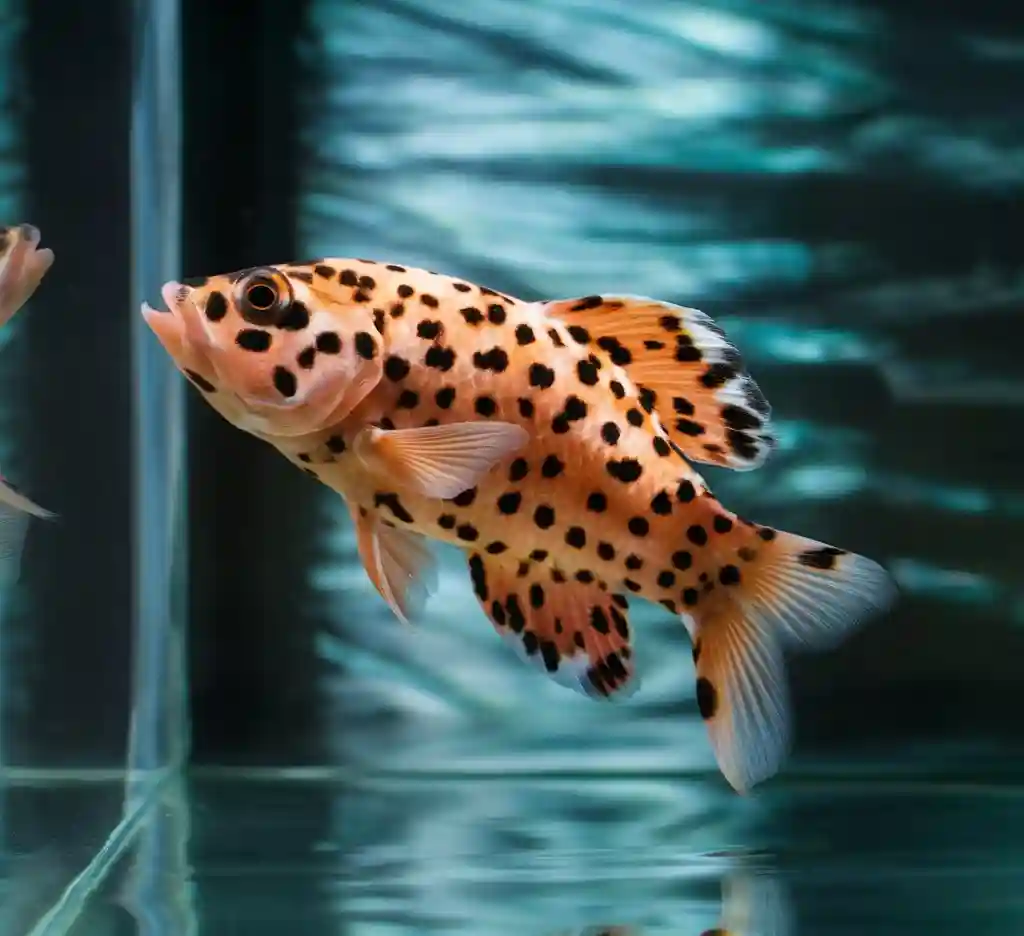
Nutrition
- Feed a balanced diet rich in protein and omega-3 fatty acids
- Provide a varied diet to ensure a healthy pregnancy
Water Quality
- Maintain good water quality by performing regular water changes
- Monitor water parameters and adjust as necessary
Hiding Places
- Provide plenty of hiding places for your pregnant Dalmatian Molly
- Use plants, rocks, and decorations to create a safe and secure environment
Stress Reduction
- Minimize stress by providing a peaceful environment
- Avoid overcrowding and ensure good water quality
Monitoring
- Monitor your pregnant Dalmatian Molly’s health closely
- Look for signs of stress, disease, or pregnancy complications
Breeding
- Breed your Dalmatian Molly in a separate tank with a heater, filter, and plenty of hiding places
- Monitor the breeding process and provide a suitable environment for the fry
Fry Care
- Feed the fry a diet of newly hatched brine shrimp or infusoria
- Monitor the fry’s health closely and provide a suitable environment for growth
Recognizing the Signs: How to Tell if Your Dalmatian Molly Fish is Pregnant
1. Enlarged Belly
One of the most obvious signs of pregnancy in Dalmatian Molly Fish is a swollen belly. As the eggs develop, the fish’s abdomen will expand, becoming more rounded and pronounced. This is usually noticeable around 2-3 weeks into the pregnancy.
2. Darkening of the Belly
As the pregnancy progresses, the belly of your Dalmatian Molly Fish will start to darken, becoming a deeper shade of gray or black. This is due to the development of the eggs, which will eventually turn into live young.
3. Changes in Behavior
Pregnant Dalmatian Molly Fish often exhibit changes in behavior, such as:
- Reduced activity levels
- Increased hiding or seeking shelter
- Decreased appetite
- Aggression towards other fish
These changes are a natural response to the hormonal fluctuations and physical discomfort associated with pregnancy.
4. Gravid Spot
A gravid spot is a dark, rounded area on the belly of the fish, usually located near the anal fin. This spot will become more pronounced as the pregnancy advances, indicating the presence of developing eggs.
5. Fin Clamping
Pregnant Dalmatian Molly Fish may exhibit fin clamping, where they hold their fins close to their body, making them appear more compact. This is a natural response to the physical discomfort and stress associated with pregnancy.
Optimal Water Conditions: Creating a Healthy Environment for Your Pregnant Fish

Water Temperature
- Ideal temperature range: 72°F – 82°F (22°C – 28°C)
- Avoid sudden temperature fluctuations, as they can cause stress and complications during pregnancy
pH Levels
- Ideal pH range: 6.5 – 8.5
- Maintain a stable pH level, as fluctuations can cause stress and discomfort for your pregnant fish
- Ideal water hardness: 10-20 dGH
- Maintain a moderate water hardness to ensure the health and development of your fish and their fry
- Perform regular water changes (10-20% every week) to maintain water quality and prevent the buildup of toxins
- Use a gravel vacuum to remove debris and waste, and replace with fresh, dechlorinated water
Water Quality
- Monitor ammonia, nitrite, and nitrate levels regularly
- Perform regular water tests to ensure optimal water quality
- Maintain a healthy biological cycle by providing adequate biological filtration and regular maintenance
Decorations and Hiding Places
- Provide plenty of hiding places, such as plants, rocks, and decorations, to reduce stress and promote a sense of security
- Ensure that decorations are secure and won’t cause harm to your fish or their fry
Water Flow and Oxygenation
- Maintain a moderate water flow to promote oxygenation and prevent stagnation
- Ensure that your aquarium has adequate aeration, such as a powerhead or air stone, to maintain optimal oxygen levels
Tips for a Healthy Environment
- Avoid overcrowding, as it can lead to stress and disease
- Maintain a peaceful community by avoiding aggressive tankmates
- Provide a varied and nutritious diet to support the health and development of your pregnant fish and their fry
Nutrition for a Healthy Pregnancy: The Best Foods for Your Pregnant Dalmatian Molly Fish
Essential Nutrients
- Protein: Rich in amino acids, protein is essential for egg development and fetal growth. Good sources include brine shrimp, bloodworms, and high-quality commercial flakes or pellets.
- Omega-3 Fatty Acids: These healthy fats support fetal development, brain function, and immune system development. Find them in foods like spirulina, krill, and omega-3 enriched flakes or pellets.
- Vitamins and Minerals: Vitamins A, C, and E, as well as minerals like calcium and phosphorus, are essential for egg development and fetal growth. Include foods rich in these nutrients, such as algae, vegetables, and fortified commercial foods.
Recommended Foods
- Live or Frozen Brine Shrimp: Rich in protein and omega-3 fatty acids, brine shrimp are an excellent food for pregnant Dalmatian Molly Fish.
- Bloodworms: High in protein and iron, bloodworms are a nutritious treat for pregnant fish.
- Spirulina: This algae-based food is rich in omega-3 fatty acids, vitamins, and minerals, making it an excellent addition to a pregnant Dalmatian Molly Fish’s diet.
- High-Quality Commercial Flakes or Pellets: Look for foods specifically formulated for breeding or pregnant fish, as they often contain the necessary nutrients for a healthy pregnancy.
Feeding Tips
- Feed frequently: Pregnant Dalmatian Molly Fish have high energy needs, so feed them 2-3 times a day, only as much as they can consume within a few minutes.
- Vary their diet: Rotate foods to ensure a balanced diet and prevent nutrient deficiencies.
- Avoid overfeeding: Monitor your fish’s weight and adjust feeding amounts accordingly to prevent obesity and related health issues.
Supplements
- Omega-3 Supplements: Consider adding omega-3 supplements to your fish’s diet, especially if they’re not receiving enough from their regular food.
- Vitamin Supplements: Add vitamin supplements to their food, especially vitamins A, C, and E, to support egg development and fetal growth.
The Importance of Hiding Places: Providing a Safe and Stress-Free Environment
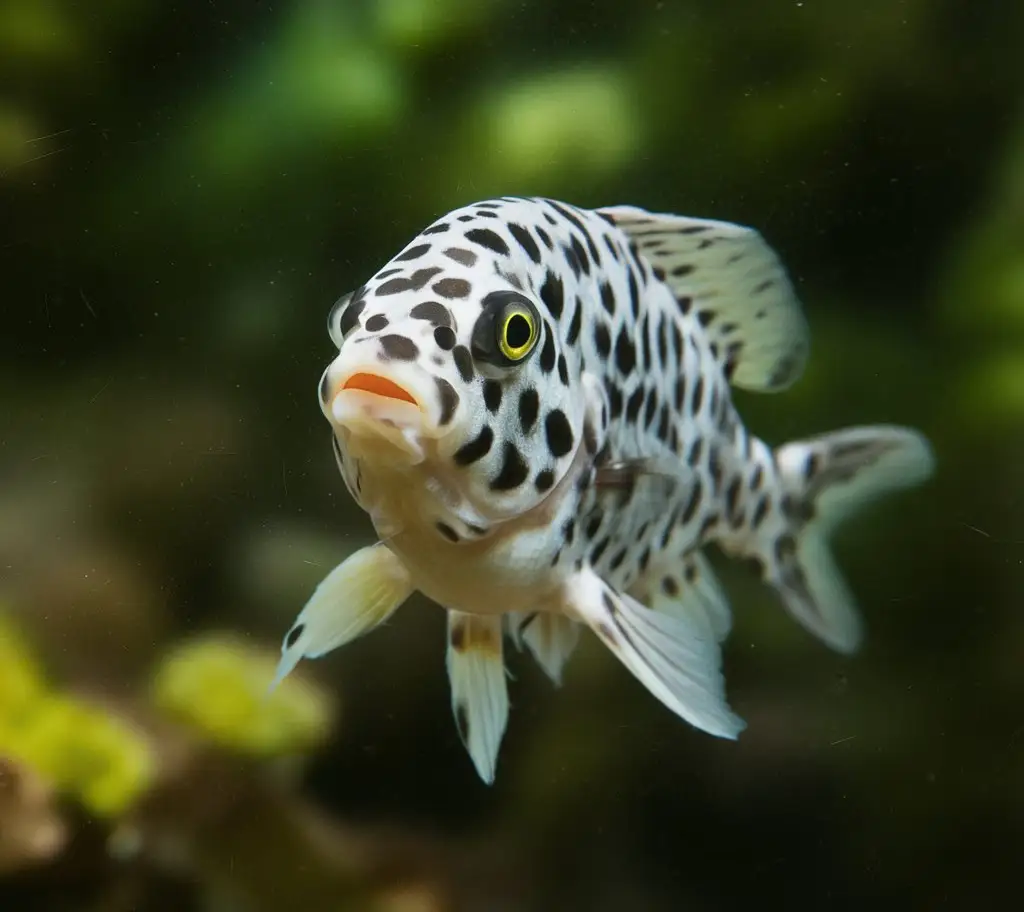
Why Hiding Places are Essential
- Reduces Stress: Hiding places allow your pregnant fish to feel secure and hidden from potential predators, reducing stress and anxiety.
- Provides a Sense of Security: Hiding places give your fish a sense of control and security, which is essential for their mental and physical well-being.
- Encourages Rest: Hiding places provide a quiet, secluded area for your fish to rest and conserve energy, which is vital for a healthy pregnancy.
Types of Hiding Places
- Plants: Live or artificial plants provide excellent hiding places for your fish. Choose plants with dense foliage or tall stems to create a sense of security.
- Rocks and Caves: Add rocks or caves to create hiding places and visual barriers, making your fish feel more secure.
- Decorations: Use decorations like treasure chests, sunken ships, or other ornaments to create hiding places and add visual interest to the aquarium.
- Tunnels and Mazes: Add tunnels or mazes to create a sense of security and provide hiding places for your fish.
Tips for Creating a Safe Environment
- Provide Multiple Hiding Places: Offer several hiding places to reduce competition and stress among your fish.
- Vary Hiding Place Sizes: Include hiding places of different sizes to accommodate your fish’s changing needs during pregnancy.
- Maintain Good Water Quality: Regular water changes and proper filtration will help reduce stress and promote a healthy environment.
- Monitor Water Parameters: Regularly test water parameters to ensure they are within the ideal range for your pregnant Dalmatian Molly Fish.
Pregnancy Duration and Stages: What to Expect from Conception to Birth
Pregnancy Duration
- The average pregnancy duration for Dalmatian Molly Fish is around 4-6 weeks, but it can vary depending on factors like water quality, nutrition, and genetics.
Stages of Pregnancy
- Conception: The mating process typically occurs in the morning, and the male fish will fertilize the eggs released by the female.
- Egg Development: The fertilized eggs will begin to develop, and the female fish will start to show signs of pregnancy, such as a swollen belly and darkening of the abdomen.
- Gestation: The eggs will continue to develop, and the female fish will start to prepare for birth.
- Birth: The female fish will give birth to live young, which will be miniature versions of the parents.
What to Expect During Pregnancy
- Weight Gain: The female fish will gain weight as the eggs develop, and her belly will become more rounded.
- Behavioral Changes: The female fish may become more aggressive or territorial as she prepares for birth.
- Changes in Appetite: The female fish may experience changes in appetite, and her diet may need to be adjusted accordingly.
Caring for Your Pregnant Fish
- Provide a Balanced Diet: Ensure your fish is receiving a nutrient-rich diet that includes foods high in protein and omega-3 fatty acids.
- Maintain Good Water Quality: Regular water changes and proper filtration will help reduce stress and promote a healthy environment.
- Monitor Water Parameters: Regularly test water parameters to ensure they are within the ideal range for your pregnant Dalmatian Molly Fish.
Common Health Issues: Identifying and Managing Complications in Pregnant Dalmatian Molly Fish
Common Health Issues in Pregnant Dalmatian Molly Fish
- Fungal Infections: Fungal infections can occur in pregnant Dalmatian Molly Fish, especially if they are stressed or have a weakened immune system. Look for signs of fungal infections, such as white cotton-like growths on the fish’s body.
- Bacterial Infections: Bacterial infections can also affect pregnant Dalmatian Molly Fish, causing symptoms like labored breathing, lethargy, and loss of appetite.
- Parasitic Infections: Parasitic infections, such as ich or velvet, can affect pregnant Dalmatian Molly Fish, causing symptoms like white spots, rapid breathing, and scratching.
- Nutritional Deficiencies: Pregnant Dalmatian Molly Fish require a balanced diet rich in protein and omega-3 fatty acids. Nutritional deficiencies can lead to health problems, such as stunted growth, poor egg development, and increased susceptibility to disease.
- Stress: Stress can weaken the immune system of pregnant Dalmatian Molly Fish, making them more susceptible to disease. Identify and manage stressors, such as aggressive tankmates, poor water quality, and inadequate hiding places.
Identifying Complications
- Monitor Water Quality: Regularly test water parameters to ensure they are within the ideal range for your pregnant Dalmatian Molly Fish.
- Observe Your Fish: Regularly observe your fish for signs of illness, such as labored breathing, lethargy, or changes in appetite.
- Perform Regular Water Changes: Regular water changes can help prevent the buildup of toxins and reduce the risk of disease.
Managing Complications
- Quarantine Affected Fish: Isolate affected fish to prevent the spread of disease and provide targeted treatment.
- Administer Medication: Use medications specifically designed for aquarium fish to treat fungal, bacterial, or parasitic infections.
- Improve Water Quality: Improve water quality by performing regular water changes, maintaining proper filtration, and monitoring water parameters.
- Provide a Balanced Diet: Ensure your pregnant Dalmatian Molly Fish is receiving a balanced diet rich in protein and omega-3 fatty acids.
Breeding and Mating: Tips for Successful Spawning and Fry Care
Choosing the Right Mates
- Select Healthy Fish: Choose healthy, disease-free fish with good genetics to ensure a successful spawn.
- Consider the Lineage: Select fish from a reputable breeder or with a known lineage to ensure the best possible outcome.
Preparing for Spawning
- Condition the Fish: Feed the fish a nutrient-rich diet to promote healthy egg development and spawning.
- Provide a Suitable Environment: Create a peaceful, stress-free environment with plenty of hiding places and a stable water temperature.
The Mating Process
- Introduce the Fish: Introduce the male and female fish to each other in a separate breeding tank.
- Monitor the Fish: Observe the fish for signs of spawning, such as the male’s courtship display or the female’s egg-laying behavior.
Caring for the Fry
- Provide a Separate Tank: Move the fry to a separate tank with a heater, filter, and plenty of hiding places.
- Feed the Fry: Feed the fry a diet of newly hatched brine shrimp or infusoria, gradually introducing larger foods as they grow.
- Monitor Water Quality: Regularly test water parameters and perform water changes to maintain a healthy environment.
Tips for Successful Breeding
- Keep the Tank Clean: Regularly clean the breeding tank to prevent disease and maintain water quality.
- Monitor Water Temperature: Maintain a stable water temperature between 72°F and 82°F (22°C and 28°C).
- Avoid Overcrowding: Avoid overcrowding the breeding tank to prevent stress and disease.
Post-Birth Care: Caring for Your Newborn Fry and Recovering Mother
Caring for Your Newborn Fry
- Provide a Suitable Environment: Move the fry to a separate tank with a heater, filter, and plenty of hiding places.
- Feed the Fry: Feed the fry a diet of newly hatched brine shrimp or infusoria, gradually introducing larger foods as they grow.
- Monitor Water Quality: Regularly test water parameters and perform water changes to maintain a healthy environment.
Caring for Your Recovering Mother
- Provide a Quiet Environment: Move the mother to a quiet, stress-free environment to promote recovery.
- Monitor Water Quality: Regularly test water parameters and perform water changes to maintain a healthy environment.
- Avoid Overfeeding: Avoid overfeeding the mother to prevent digestive issues and promote recovery.
Tips for Successful Post-Birth Care
- Monitor for Disease: Monitor the fry and mother for signs of disease, such as labored breathing, lethargy, or changes in appetite.
- Perform Regular Water Changes: Regularly change 10-20% of the water in the fry tank to maintain water quality and prevent disease.
- Avoid Overcrowding: Avoid overcrowding the fry tank to prevent stress and disease.
FAQs
Q: How often should I feed my pregnant Dalmatian Molly Fish?
A: Feed your pregnant Dalmatian Molly Fish 2-3 times a day, only as much as they can consume within a few minutes.
Q: What is the ideal water temperature for breeding Dalmatian Molly Fish?
A: The ideal water temperature for breeding Dalmatian Molly Fish is between 72°F and 82°F (22°C and 28°C).
Q: How long does it take for Dalmatian Molly Fish to spawn?
A: The breeding process typically takes around 2-4 weeks, but can vary depending on factors such as water quality, nutrition, and genetics.
Q: How many eggs do Dalmatian Molly Fish typically lay?
A: Dalmatian Molly Fish typically lay between 10-20 eggs per spawn, but this can vary depending on factors such as water quality, nutrition, and genetics.
Q: How long do Dalmatian Molly Fish fry take to develop?
A: Dalmatian Molly Fish fry typically take around 2-4 weeks to develop and become independent.
Q: How often should I change the water in the fry tank?
A: Change 10-20% of the water in the fry tank every 2-3 days to maintain water quality and prevent disease.
Q: What are some common health issues in Dalmatian Molly Fish?
A: Common health issues in Dalmatian Molly Fish include fungal infections, bacterial infections, parasitic infections, and nutritional deficiencies.
Q: How can I prevent disease in my Dalmatian Molly Fish?
A: Prevent disease in your Dalmatian Molly Fish by maintaining good water quality, providing a balanced diet, and monitoring their health closely.

Hello, I’m Aria Cooper, the heart and soul behind Swimmy Buddies. As a devoted fish aficionado, I share my aquatic adventures and expertise to inspire your own underwater explorations. 🐠🌊

